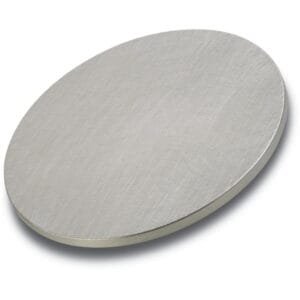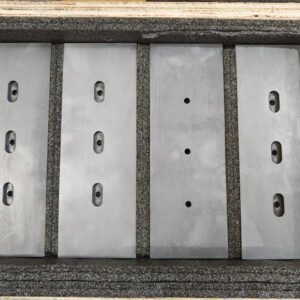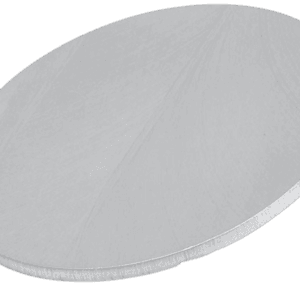Europium Nitride Sputtering Target Description
Europium Nitride Sputtering Targets from TFM are crafted with exceptional precision and high purity, ensuring the production of pure and uniform thin films. The presence of europium endows these targets with notable magnetic properties, making them ideal for creating magnetic materials used in storage devices and magnetic sensors. The chemical stability of Europium Nitride ensures dependable performance in long-term applications and experiments. With high conductivity, these sputtering targets facilitate uniform deposition, enhancing both film quality and performance. Europium Nitride Sputtering Targets are extensively utilized in the fabrication of optical and magnetic films, as well as electronic components, providing essential material support for advanced technology applications.
Related Product: Europium Sputtering Target, Europium Oxide Sputtering Target
Europium Nitride Sputtering Target Specifications
| Compound Formula | EuN |
| Molecular Weight | 165.97 |
| Appearance | Black Target |
| Melting Point | – |
| Density | – |
| Available Sizes | Dia.: 1.0″, 2.0″, 3.0″, 4.0″, 5.0″, 6.0″ Thick: 0.125″, 0.250″ |
Europium Nitride Sputtering Target Handling Notes
Indium bonding is advised for Europium Nitride Sputtering Targets due to their inherent characteristics that are less suited for sputtering, such as brittleness and low thermal conductivity. This material’s low thermal conductivity and susceptibility to thermal shock highlight the need for indium bonding to ensure effective performance and stability during the sputtering process.
Europium Nitride Sputtering Target Application
Optical Thin Film Technology: Europium Nitride Sputtering Targets are essential for creating high-performance optical thin films, including reflector sheets and coatings for lasers and other optical devices.
Magnetic Thin Film Applications: The magnetic properties of Europium Nitride make it crucial for magnetic storage solutions, magnetic sensors, and other magnetic components, enhancing their functionality and efficiency.
Electronic Component Manufacturing: These targets are used to produce thin films for advanced electronic components, such as magnetoresistors and magneto-electric sensors, improving their performance and reliability.
Magneto-Optical Storage Technology: Europium Nitride Sputtering Targets are utilized in magneto-optical storage systems to develop high-density, high-performance magnetic storage media.
Magnetic Navigation Systems: In magnetic navigation systems, these targets are applied to manufacture sensitive and accurate magnetic sensors, ensuring precise navigation capabilities.
Europium Nitride Sputtering Target Packaging
Our Europium Nitride Sputtering Target is meticulously handled throughout storage and transportation to maintain the product’s quality and integrity in its original state.





Reviews
There are no reviews yet.